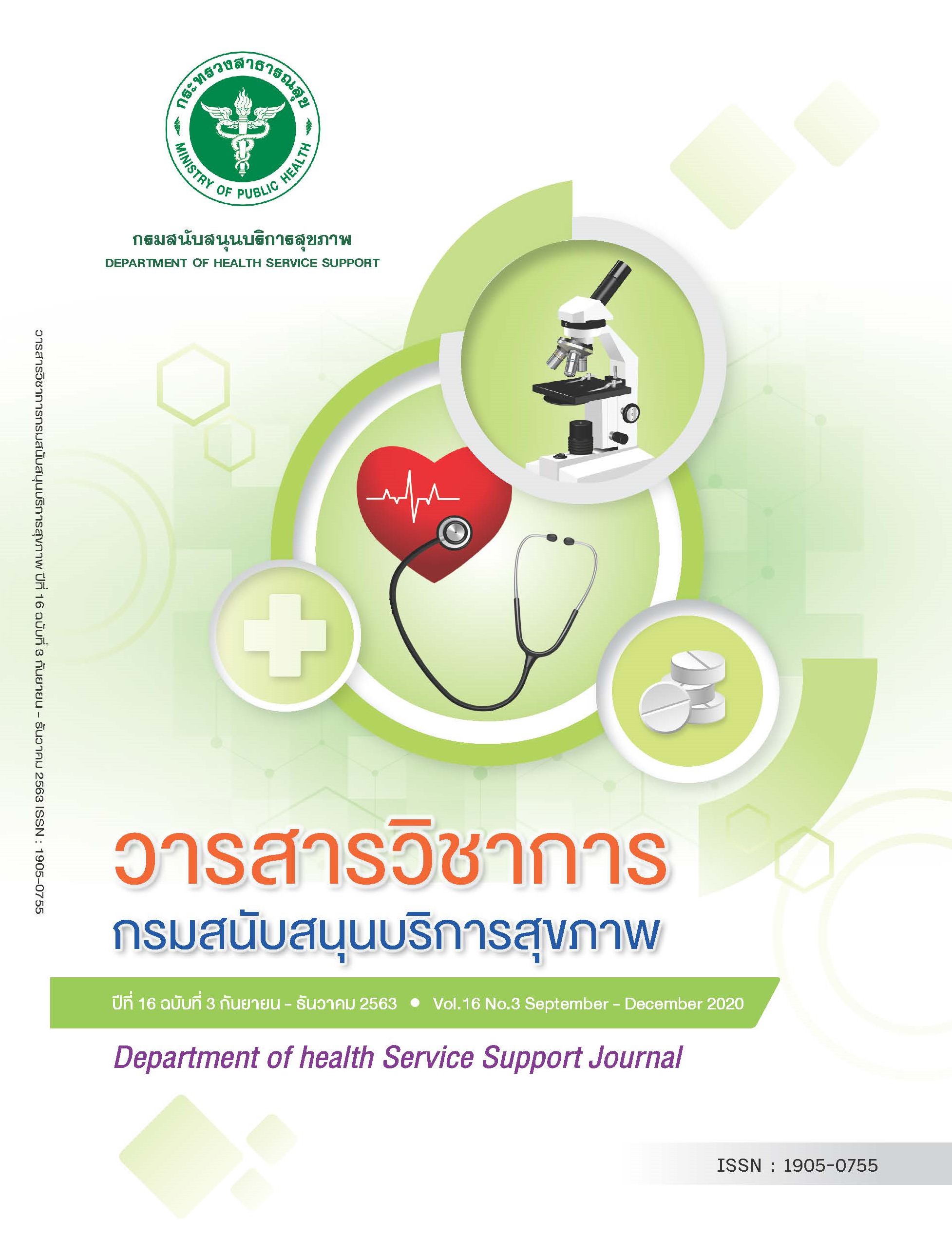THE DEVELOPMENT OF THE NEW MODEL OF HEALTH PROMOTION FOR HOSPITALS
Keywords:
New health promotion, Working age, Health behaviorAbstract
The objectives of this participatory action research were to develop the New Model of Health Promotion for Hospitals, study results of the operation, satisfaction with service and problems in the operation of the new model of health promotion methods. The sample study consisted of : 1) 30 Experts (meeting proposed model) 2) A group of 20 service providers from 2 volunteer hospitals 3) Receptive / proactive service group of 160 people. The instrument was a N New Model of Health Promotion, questionnaire for receiving services for a new health promoting, performance record form and guidelines for focus groups. Quantitative data was analyzed by descriptive statistics and Paired Sample T-test, and qualitative data was analyzed by content analyzing. The results founded that the model for new health promotion methods, there was 1 manager to carry out the coordination, linking and integrating work together. In terms of place, should be a separate service center. Equipment should consisted of tools such as, the screening form for various risks, weighing scale, height measurement, waist tape measure, blood pressure monitor, body fitness test, which were a basic tool, by providing services operated both responsive and proactive services (inside and outside the hospital), including healthy groups, risk groups and chronic non-communicable diseases or others, by health screening, health check-up, evaluate physical fitness, health counseling, modify health behavior, exercise practice, vaccination services, cancer detection services, screening for occupational diseases, and providing service according to the package. After receiving the service and returned to take care of themselves at home, it found that health behaviors were better than before receiving services with statistical significance (P-value < 0.001). The body weight, waist line, physical fitness in lung capacity, softness and maximum oxygen was efficiency better than before receiving services with statistical significance (P-value < 0.05), both in the responsive and proactive services group. Service recipients for the new health promotion both the responsive and proactive services group had satisfaction at the high level of 90.0% and 75.0%, respectively. Service providers have little problem in implementing new health promotion methods.
According to the results showed that of the New Model of Health Promotion had good effectiveness, service recipients satisfied it, and it was also possible to implement. So there should be extend applying this model and continue to operate in various hospitals.
References
Ekparakorn, w., Pukharoen, H, Thaikla, K.,Sathiannoppakao, W. (2016). The 5th public health survey by physical examination. Copy documents. (in Thai)
Inon, C., Phan Sa-at, W., Nanthaphon, N. (2009).Health promotion by using sports science tools. Bangkok : Printing house, agricultural cooperative of Thailand Ltd. (in Thai)
Jirasutsoontorn, S. (2018). The operations evaluation of working age wellness center, Suratthani province. Research report. (in Thai)
Palank. C.L. (1991) Determinants of Health Promotion Behavior. Nursing Clinics of North America.26(4): 815-832.
Pender, N., Murdaugh, C., & Parsons, M.A. (2011). Health promotion in nursing practice (6th ed.).Upper Saddle River NJ : Pearson Education LTD.
Rice, R. (2000). Telecaring in home care: Making a telephone visit. Geriatric Nursing.21(1), 56-57.
Stufflebeam, Foley, W. J., Gephart, W. J., Guba, E. G.,Hammond, R. L., Merriman, H.O,. (1971). Educational Evaluation and Decision – Making.Illinois : Peacock Publishers.
Thai Lifestyle Strategy Management Office. (2019).Operation manual for wellness Center,volume 1. Nonthaburi: The graphico systems company Limited. (in Thai)
Thai Lifestyle Strategy Management Office. (2020).Operation manual for wellness Center,volume 2. Nonthaburi: The graphico systems company Limited. (in Thai)
Unprommee, S. (2013). Important development of health promotion. Bangkok : Thanapress Company Limited. (in Thai)
Worasathit, P. (2019) The Working Age Wellness Center Model Development Research report. (in Thai)
World Health Organization (WHO). (2016). Healthy workplaces: A model for action. World Health Organization. Retrieved March 18, 2020, from: http://www.who.int/ occupational_health /publications/healthy_workplaces model.pd.
Downloads
Published
How to Cite
Issue
Section
License

This work is licensed under a Creative Commons Attribution-NonCommercial-NoDerivatives 4.0 International License.



